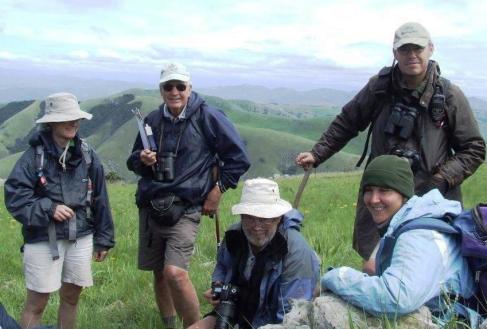The first syndicated lodge site in Mountainlands is steadily filling up with members. Named Waterbuck Ridge, it was bought by Nelspruit residents and business owners, Mark and Helen Schormann. Their initial intent was for a private holiday home, but friends and family quickly fell in love with the property and they decided to establish a leisure syndicate that will consist of ten members. The ten owners will divide the costs of the site and the construction of the lodge among themselves.

Mark and Helen Schormann at a World Cup game
Recently, Hanno and Tania Rottier from Durbanville, Cape Town became the fifth syndicate members. “We have a constant craving to go back to the bushveld to experience the peace and tranquility that it offers. This is the reason why we started looking for a place that can offer the privacy as well as all other things that a top class game property offers without the hassle of constantly worrying about the safety and management of your investment. We think we have found it in Mountainlands,” Hanno said.

The Nortier Family: (from left) Hanno with daughters Tamarisk and Nadine and wife Tania in front.
What got Mark interested in the first place is that he wanted to get involved in a conservation project that will benefit future generations as well. “I also look forward to being involved in a project which should attract other interesting people and make friends with people with similar interests and outlook,” he added

The Schormann kids seem to have grown up on Mountainlands, forever finding something new to do. Here,during one of their earlier visits, are from left Steven, Daniel, Michaela and Robyn.
His sentiments are shared by Louis van der Merwe, another member of the syndicate. “What makes Mountainlands desirable from an investment point of view is that there is an overall plan for development of the reserve, and that only a minute percentage of the land will ever be developed. This is being done in an environmentally sensitive and sustainable manner, putting nature first. I consider myself lucky to be part of such a beautiful place that is located so close to where I live. Mountainlands has so many valuable natural attractions, such as its abundance of clean water, which deserves to be cared for, for future generations.”

Louis van der Merwe, trying to tell everybody that it's a borrowed hat.
Helen fell in love with the pristine beauty and serenity together with the interesting history of the Barberton area. Summarizing the aspects of the development that she found attractive, she said she was impressed with the developer’s dedication to the project and the absolute sense of safety. “Also, the close proximity to modern amenities, entertainment, shopping and medical facilities is a huge bonus. We look forward to a development that meets all requirements of luxury and uniqueness while not compromising the natural surroundings or people“, she added.
Once constructed, Waterbuck Ridge Lodge will consist of a main building with entertainment areas and four en-suite bungalows. Helen, who also studied architecture, plans to give a meaningful input into the lodge. “We believe Mountainlands offers endless opportunities for the adventure seeker and creative personalities such as artists and photographers, the fitness junky, or the explorer scientist looking for unique natural wonders. These are the kinds of people that we would like to welcome into our syndicate and hope to meet as fellow owners”, she said.

The Waterbuck ridge owners have become famous for their lavish picnics - time to build the entertainment area.
Five more syndicate shares are available in Waterbuck Ridge Site, which entitles members to 5.5 week’s holiday accommodation per year. Shares presently start at R400 000 initially for the site and between R500 000 & R600 000 for the construction of the lodge itself. To find out more about the Waterbuck Ridge, contact Mark Schormann on Cell: +27 (0) 828025885 or visit http://www.mountainlands.co.za






















Recent Comments